Kassel Branch
Roger P. Minert, “ Kassel Branch, Hanover District,” in Under the Gun: West German and Austrian Latter-day Saints in World War II (Provo, UT: Religious Studies Center, Brigham Young University; Salt Lake City: Deseret Book, 2011), 215–23.
The northernmost major city of the historical province of Hessen-Nassau, Kassel, lies about one hundred miles south of the city of Hanover. As World War II approached, the city had 211,624 residents, only sixty-five of whom were members of the Church of Jesus Christ of Latter-day Saints. [1]
The church meetings were held in rented rooms on the third floor of an apartment building at a very fine location in town—Frankfurterstrasse 7:00. [2] A very traditional schedule was maintained, with Sunday School at 10:00 a.m. and sacrament meeting at 7:00 p.m. The Primary and the Relief Society met on Mondays at 5:00 p.m. and 8:00 p.m., respectively. MIA meetings were held on Tuesdays at 8:00 p.m. Leadership meetings were held for the branch presidency, the Sunday School, and priesthood brethren. A genealogy class was held twice each month in connection with the Mutual meetings, and choir practice took place on Tuesdays at 9:15 p.m. As in so many branches of the Church in Gemany, the members of the Kassel Branch participated in meetings and activities several times each week.
Whereas the branch was dominated by women over the age of twelve, there were also fifteen priesthood holders among the membership. Only five children were included on the branch roster at the time. American missionary Howard Lyman was the branch president one month before the war, with Albert O. Baum as first counselor. It appears from branch records that Wilhelm K. Schade became the branch president when the American missionaries were required to leave for Denmark on August 25, 1939. The president of the Sunday School was Harry A. Niebuhr, and the Primary president was Marie Schade, while Albert O. Baum led the YMMIA, Inge Baum the YWMIA, and Barbara Kerseten Sr. the Relief Society.
| Kassel Branch [3] | 1939 |
| Elders | 4 |
| Priests | 1 |
| Teachers | 4 |
| Deacons | 6 |
| Other Adult Males | 4 |
| Adult Females | 41 |
| Male Children | 4 |
| Female Children | 1 |
| Total | 65 |
Justus Ernst (born 1928) described the branch leaders in these terms: “Brother Diederich was a book-binder, Brother Schade an upholsterer, Brother Baum a painter, and Brother Göttig worked for the railroad. None of them really in any way could be considered wealthy or middle class.” [4] Eleven years old at the time, Justus recalled that the meeting facility consisted of one larger room for the general meetings and two or three other small rooms for classes. There was a pump organ in the main room, but the only décor he could remember was a picture of Joseph Smith. Average attendance in those days may have been as many as forty persons.
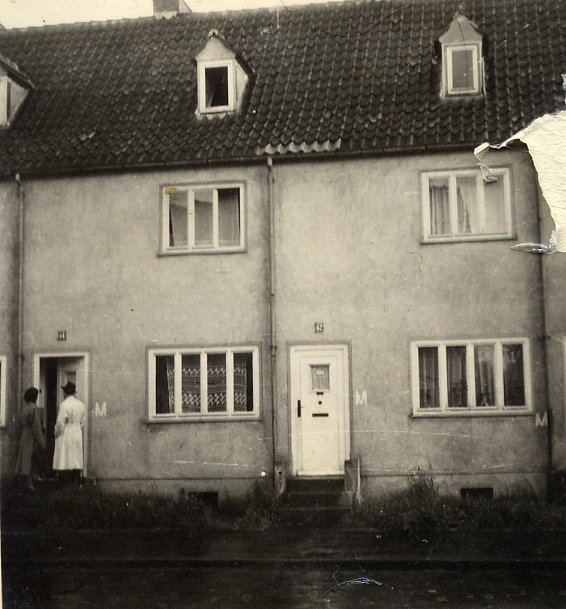 Fig. 1. The Ernst family home in 1938. (J. Ernst)
Fig. 1. The Ernst family home in 1938. (J. Ernst)
Young Justus had been baptized in the Fulda River in Kassel in 1936 and inducted with his schoolmates into the Jungvolk in 1938. As he recalled:
I think they usually planned their meetings right at the same time as we had church meetings. I was also in the Hitler Youth at age fourteen. . . . There was some indoctrination about race and stuff like that, but I wouldn’t call it heavy duty indoctrination. . . . We had some training with weapons—some shooting. As a matter of fact, my father had been in World War I and was very much convinced of the need to be able to shoot right. There was a course taught in a restaurant, and they had just air guns and small funny ones to shoot. And [my father] was interested in seeing that we could shoot. [5]
As part of his Hitler Youth service, Justus was assigned to help whitewash the attic spaces of downtown houses in order to retard fires that might be caused by incendiary bombs such as those already dropped on other German cities. [6]
Hermann Ernst (born 1927) was ordained a deacon in 1941. In those days, teenage boys were not given the Aaronic Priesthood until the branch president identified a need for service in the branch. Hermann was prepared for that service, as he described in his journal: “I had been quite active. I remember participating in carrying out programs, for example in plays performed by the Primary Association.” [7] He was also the second counselor to the Sunday School superintendant. Over the next two years, he made several comments in his journal about his willingness to serve and to be entrusted with more responsibilities in the Kassel Branch. During those years, he was working as a carpenter’s apprentice in the shops of the national railroad system.
An unnamed clerk kept good records of the branch meetings and special events beginning in 1942. (It is not clear whether previous records were lost or not written at all.) [8] The following entries provide interesting details about branch life:
August 6, 1942: Five brethren attended priesthood meeting. The branch president is Wilhelm K. Schade.
August 20, 1942: Nine sisters attended Relief Society.
August 30, 1942: District conference was held in Hanover.
August 1942: Average sacrament meeting attendance for the month was twenty persons.
September 20, 1942: The Relief Society meeting was attended by visitors from the mission office: Sister Louise Heck and her daughters Annaliese and Hannelore, and Sister Hildegard Waibel, mission Relief Society president. Sister Daining from the mission office was also here.
November 15, 1942: We had a visit by soldier Brother Kleinert from the Freiberg/
Sachsen Branch [East German Mission]; he was asked to speak. [9]
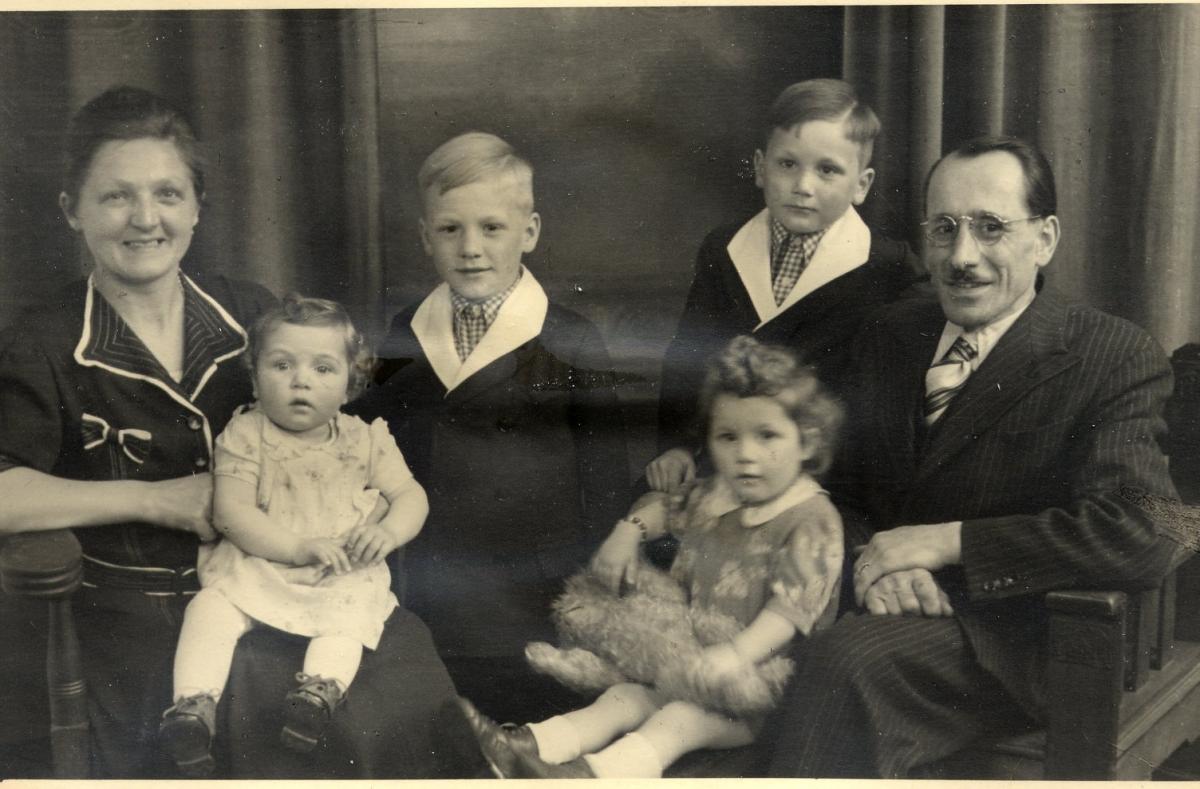 Fig. 2. The Diederich family of the Kassel Branch in 1940. From left: Anna, Elfriede, Hugo, Margaret, Wilford and Fritz. (J. Ernst)
Fig. 2. The Diederich family of the Kassel Branch in 1940. From left: Anna, Elfriede, Hugo, Margaret, Wilford and Fritz. (J. Ernst)
The following entry was made in the general branch minutes in late 1942:
From November 29 to December 27, 1942 we were not allowed to meet due to an order issued by the city police. The main reason was a report submitted by the neighbors. The mission leaders intervened and the matter was resolved. We were allowed to begin holding meetings again on December 27, 1942. [10]
The general minutes of the Kassel Branch include the following comments in the fourth year of the war:
February 28, 1943: Wilhelm K. Schade said good-bye; he was drafted and stationed in Frankfurt/
Main. April 11, 1943; District conference in Hanover.
April 18, 1943: Sister Dielmann nee Krauss died of pneumonia and heart disease; she was buried in Helsa by Kassel on April 18.
July 18, 1943: District president Walther Pohlsander visited our meetings. He released Brother Schade as branch president due to his draft notice. A new presidency was called: Fritz Diederich, Albert Baum, Franz Ludwig Erich Niemann, with Konrad Göttig as secretary.
August 14, 1943: Miss Magdalena Spangenberg and Hugo Diederich were baptized.
August 15, 1943: Brother [Hermann] Schade Jr. is off to the Reichsarbeitsdienst.
August 29, 1943: Fall district conference was held in Hanover. [11]
The average attendance at sacrament meeting in 1943 was eighteen persons, with seven attending priesthood meeting.
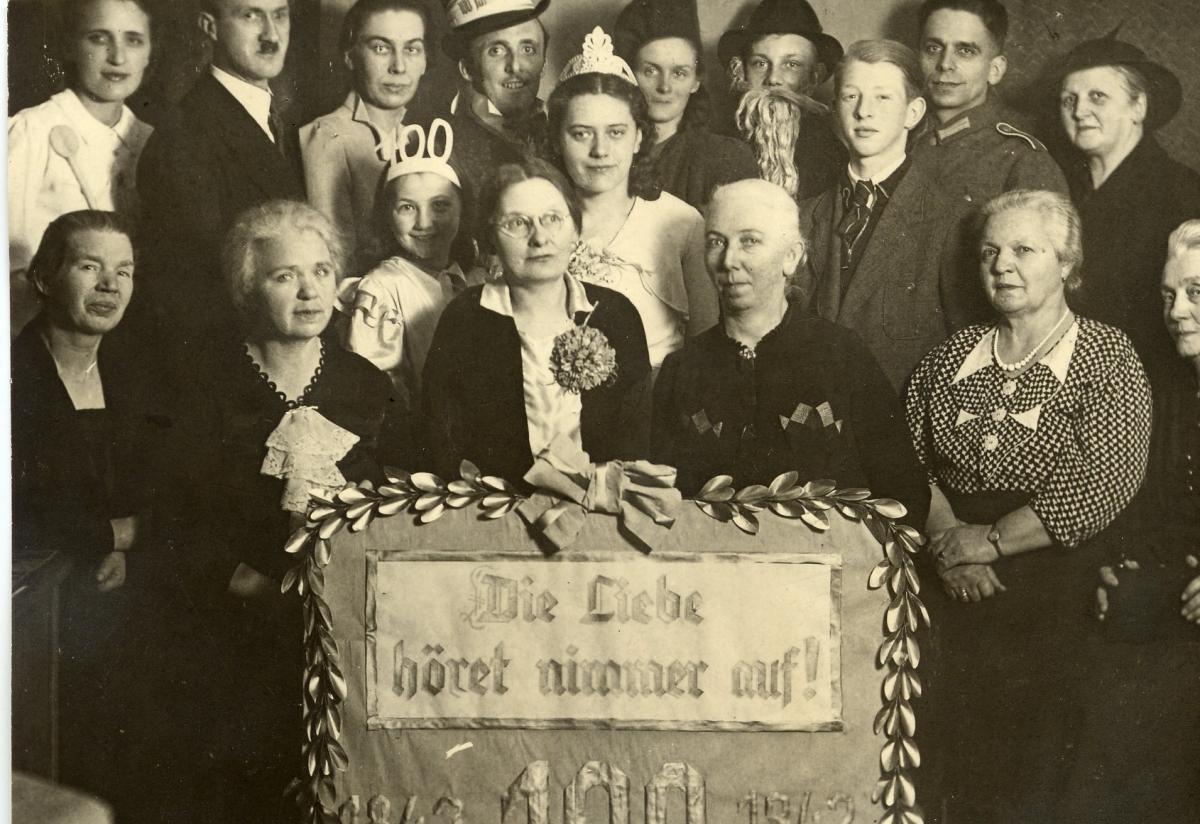 Fig. 3. Relief Society sisters of the Kassel Branch celebrated the society’s centennial in 1942 with a poster reading “Die Liebe höret nimmer auf!” (Charity never faileth!) (J. Ernst)
Fig. 3. Relief Society sisters of the Kassel Branch celebrated the society’s centennial in 1942 with a poster reading “Die Liebe höret nimmer auf!” (Charity never faileth!) (J. Ernst)
Hermann Ernst wrote in his journal about a trip to Munich with Elder A. O. Baum in July 1943. The two made the long journey by rail and attended church with the Munich Branch. As beautiful as the Bavarian capital city was, Hermann was apparently concentrating on matters of religion rather than culture and history: “The city of Munich didn’t impress us too much without its monuments. But we were favorably impressed by the Munich Branch. We even had to talk in the sacrament meeting,” he wrote. The two then traveled into the Alps just south of Munich. The mountains left a lasting impression of the power of God. His assessment of the entire experience reads thus: “Fully satisfied and [with] a stronger testimony of the truth we returned to our home.”
The question of religion and church apparently was more than just a passing fancy to Hermann Ernst. On September 2, 1943, then sixteen years old, he went to city hall and asked to have his name removed from the records of the Lutheran Church in which he had been baptized as an infant. He made no other comments in his journal about this question, allowing the assumption that his request was granted. Just days later, he was ordained to the office of teacher in the Aaronic Priesthood.
In October 1943, the war came home to Kassel in a terrible way. There had been a dozen or so minor attacks from the air before that time, but nothing in comparison to the blows dealt the city in that month. The branch clerk made the following sad comments in his record:
October 3–4, 1943: Air-raid attack on Kassel; the Schade and Diederich families lost their homes and some church property; other members lost their windows and doors. A bomb hit the church rooms. October 22, 1943: Another attack on Kassel. Church rooms at Frankfurterstrasse 7 II and all church property were totally destroyed. The apartments of many members were damaged or totally destroyed and the following were killed:
Auguste Mülverstedt, born 12 Sep 1880 in Kassel
Frieda Mülverstedt born 19 March 1904 in Kassel
Katharine Wittrock born 7 Dec 1871 in Eschwege
Sophie-Marie Elisabeth Diederich Sr. born 16 Feb 1886 in Hofgeismar
Sophie Elisabeth Diederich Jr. born 13 April 1914 in Kassel
We are told that the last two were singing “Nearer, My God, to Thee” just before they died.
The attack on Kassel on October 22 left nearly the entire downtown in ruins. The Ernst family lived across the river to the east in the Bettenhausen suburb and were spared the devastation that occurred just a mile away. Nevertheless, Ernst was soon exposed to the real horrors of the war, and he recounted what happened the next morning:
The streetcars didn’t go, so I just started walking, and as I came to the inner part of the town there were hundreds of corpses laying on the street. And it was just really something. I had never seen a dead person in my whole life. And all of a sudden there were hundreds of them laying there, women and children and older men, not too many soldiers. The reason for their dying was actually that the fire was so intense, where they had been in the cellars and these shelters, that it had eaten up all the oxygen and they were actually suffocating. [12]
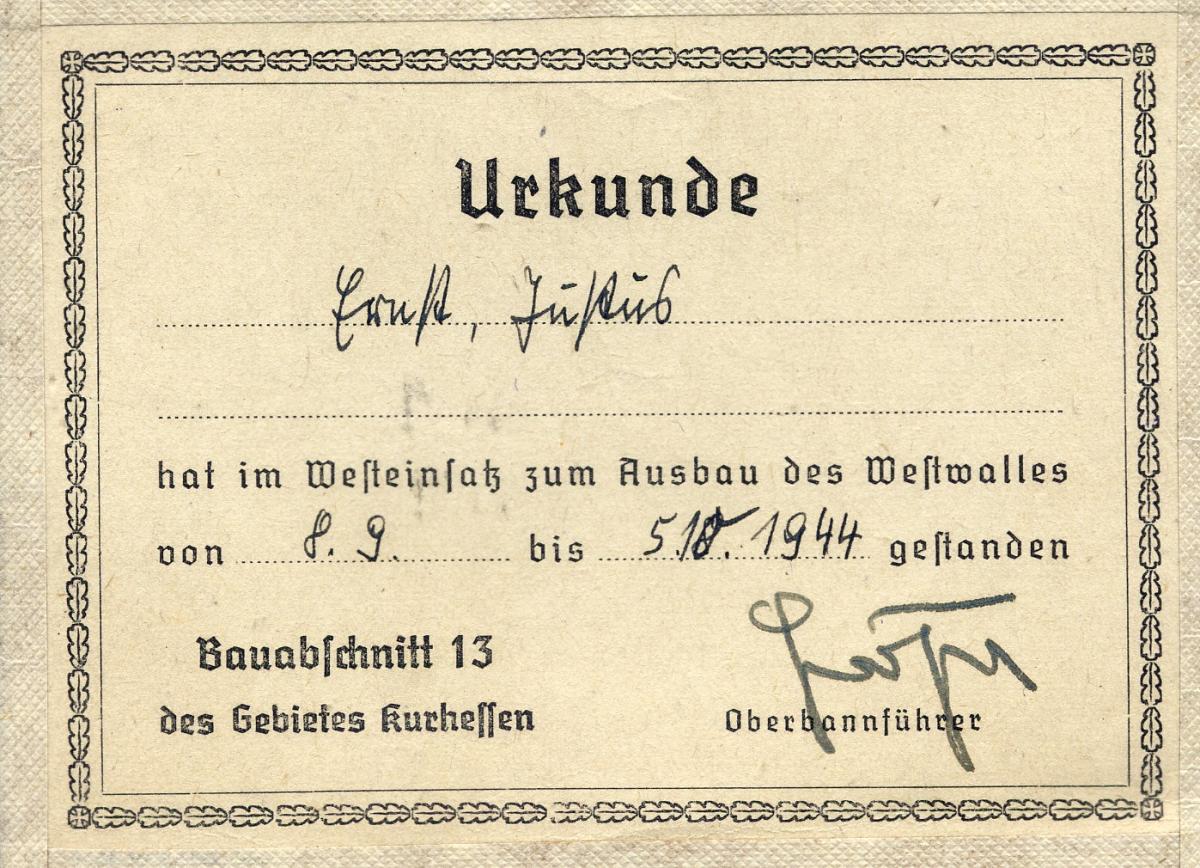 Fig. 4. Justus Ernst was awarded this certificate after working on the Westwall defense system in France in 1944. (J. Ernst)
Fig. 4. Justus Ernst was awarded this certificate after working on the Westwall defense system in France in 1944. (J. Ernst)
According to branch records, the members began to be dispersed. In November 1943, branch president Fritz Diederich lost his home and moved to Vockerode to find new employment; he asked to be released and was replaced by Franz Niemann. Attempts were then made to locate branch members through the city’s missing persons office and a newsletter (written by Hermann Ernst) was sent to several families who had left the city. [13]
In early 1944, the Saints began to meet in the homes of the few member families still in Kassel. The names Schade and Ernst occur frequently in the branch records in this regard. All the while, a search was conducted for a new meeting place somewhere in town. In February, the branch was allowed to rent space in the Adventists Hall at Querallee 11. Hermann Ernst, the elder brother of Justus, spent a good deal of time helping this come about and reaped the praises of the branch president. The next few entries in the branch records are instructive:
February 20, 1944: Sacrament meeting was held despite air raid alarms. In order to attend the meeting, Sister Baum and Brother Diederich had to get up at 4 a.m. The members are determined to do their duty.
March 5, 1944: District conference in Hannover. Brother Niemann is set apart as branch president. Five sisters and four brethren went. All had to overcome major obstacles.
March 19, 1944: Unfortunately, Hermann Ernst has been transferred to Graudenz. I [the branch president?] will lose a very capable and willing helper. . . . Sister Schade has asked me to locate the graves of our members who were killed on October 22–23 so that the graves can be dedicated and decorated with flowers.
April 20¸ 1944: Konrad Göttig has been drafted. Because his family is living in Köln, he asked me to have their records transferred to the Köln Branch.
April 21, 1944: Branch President Ludwig has been transferred to Westphalia. Brother Pohlsander gave him permission to make Gustav Ernst the temporary branch leader. [14]
It is not clear when Ludwig became the branch president, but this is a clear indication that the leadership of the Kassel Branch was changing almost as frequently as the meeting location. Gustav Ernst was not yet a priesthood holder at the time.
May 28, 1944: Sacrament meeting began at 3 p.m. during an air raid alarm.
June 18, 1944: Gustav Ernst is ordained to the Aaronic Priesthood and set apart as branch president.
June 25, 1944: A celebration of the anniversary of the death of Joseph Smith was held. A resident of the building had just celebrated a wedding with lots of flowers, so the branch hall was already decorated for the Joseph Smith event. Eight members were in attendance. [15]
The typical apprenticeship in Germany ended with an examination, and Hermann Ernst passed his in carpentry with excellent marks in March 1944. At seventeen, he was a prime candidate for service to his country, and this began officially with his call to the national labor service. From June 7 to September 9, 1944, he worked in small towns in Lithuania and East Prussia. The literary talents that had inspired him to begin a newsletter for the Kassel Branch a few months earlier sought expression that summer, so he wrote two articles for a local newspaper. The titles were “Workmen on the East River” and “Send out the Watchmen.” He was also a budding poet.
In the summer of 1944, Justus Ernst was sent to the Western Front to work on fortifications. The West Wall was designed to defend Germany against an anticipated invasion by the Allies. He recalled the following about his service as a sixteen-year-old: “I remember working at piling up ammunition. They had lots of piles, big piles of ammunition for good-sized artillery pieces. They were right in the forest and unprotected. They were just stacked up there; I don’t know what they did with them.”
Back in Kassel, it was becoming increasingly difficult to hold Church meetings. On December 24, 1944, the meeting had to be postponed from 2:00 to 4:00 p.m. due to air-raid alarms. Apparently the Querallee rooms were not available when the year 1945 arrived, because the Sunday meetings were held in the Ernst home in Bettenhausen in January and February.
Gustav and Martha Ernst were deeply concerned when their son, Hermann, was drafted into the Wehrmacht in November 1944. Just before receiving that call, Hermann wrote what could be called a summary of his young life:
Thus, I look back on the years of being a citizen on this earth. I came into this world as a child of industrious, honest and god-fearing parents I grew up in common simplicity. I had a hard time to learn in school. I enjoyed history, geography and similar classes. Nevertheless, I passed all of my classes. Through an incident, brought about by God, I came into the Church of Jesus Christ. My parents and my brother also became members of the same. There I was very teachable. Very soon I was able to participate in plays and programs. I have proved my ability through constant effort and faithfulness to the Church. During my apprenticeship I excelled because of the strength of my character. I was always one of the best at the trade school. My character and my ability were also recognized in the pre-military training camp. The railway gave me a free tuition to be a student at the state school in Graudenz. A high recognition. Thus, I am now a student. I made much progress in the Church. From second counselor in the Sunday School to first counselor in the branch presidency within three years. . . . Thus, my life has been a life of success and work and may it continue to be so. The Lord may be my protector and my shield; my comforter in all my distress. Amen.
This young man with the successful past and hopes for an equally successful future had in reality very little time left on earth. He was killed near Guben, Germany, on February 23, 1945. The Red Army had just launched its attack on the German capital by crossing the Oder and Neisse Rivers southeast of Berlin. Justus recalled what his father had told him about hearing the news of Hermann’s death: “Two guys from the [Nazi] party came to tell my parents that he had been killed. Then they offered [my father] 250 Marks to express their sympathy, I suppose. My father told them to keep that money. His son was worth more than 250 Marks.” [16]
In a final war-time entry in the branch records, we read the following: “On March 14, 1945, our rooms at Querallee 11 were destroyed in an attack. No other damage [loss of life?] was suffered.” For the rest of the war and several months thereafter, the Kassel Branch members had no official home for their meetings.
Following his service in the national labor force (January to March 1945), Justus considered volunteering for the Waffen SS—the elite combat troops commanded by Heinrich Himmler. Because many of his friends were being drafted from the Reichsarbeitsdienst directly into the Wehrmacht, Justus calculated that if he signed up with the Waffen SS he could go home for a while before being called up. “The basic training was supposed to take place in the Netherlands, and I thought that was a nice place to spend time.” Fortunately for him, the call never came, and he was still home when the war ended. He described the entry of the American army on April 4–5, 1945:
My parents were in the air-raid bunker—a big old cement box. And I was home, and I would cook some meals for my parents, like potatoes and spinach—just simple stuff, a little meat. And I put it in a bucket and took it down to the bunker. On the way there, I saw some retreating German troops. And it’s interesting. The very same street (the Leipzigerstrasse) where the Germans came back from Poland after having a big [victory] parade in 1939, here was the very same street, but a very different army going the other way. [17]
That “very different army” consisted at the time mostly of disjointed units bereft of ammunition and food. They moved slowly back, away from the enemy, hoping to avoid combat that would result in death just days before what appeared to be certain defeat and the end of the war.
According to Justus, the conquering Americans were anything but well-disciplined.
They were really drunk. I can still see it. They had loudspeakers mounted on their tanks, and they played jazz music. One lady must have been very happy to see the Americans, but she was a little disappointed that same night when she was raped by ten different soldiers. My mother went over there to see her, got her out of her house and brought her to ours. She saw a picture of Jesus, and she said, “I’ve suffered more than he suffered.” The first thing the Americans did was come into our apartment—two guys. And they pointed at our radio and said, “Bring it.” So, I carried the radio to their quarters. They were living in the next building. They had evacuated the whole next block, and they wanted to show me where they were going to put the radio so I could pick it up when they were leaving. I didn’t realize that. My parents were scared stiff to see them take me away. They didn’t care about me; they cared about the radio. [18]
Like so many German boys his age, Justus had not known any Germany other than the Third Reich. As he recalled, “I really couldn’t compare it to anything else. When all this broke down in 1945, it was really quite a blow to me. I felt quite lost.” He confided to his diary the fact that the war and the government’s antichurch attitude actually had caused him to lose interest in the Church for a while. [19]
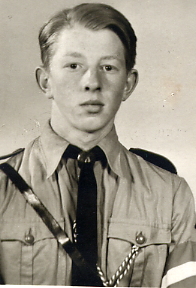 Figs. 5 and 6. Hermann Ernst (in the uniforms of the Hitler Youth and the Wehrmacht) was killed in February 1945 when the Red Army crossed the Neisse River near Guben. (J. Ernst)
Figs. 5 and 6. Hermann Ernst (in the uniforms of the Hitler Youth and the Wehrmacht) was killed in February 1945 when the Red Army crossed the Neisse River near Guben. (J. Ernst)
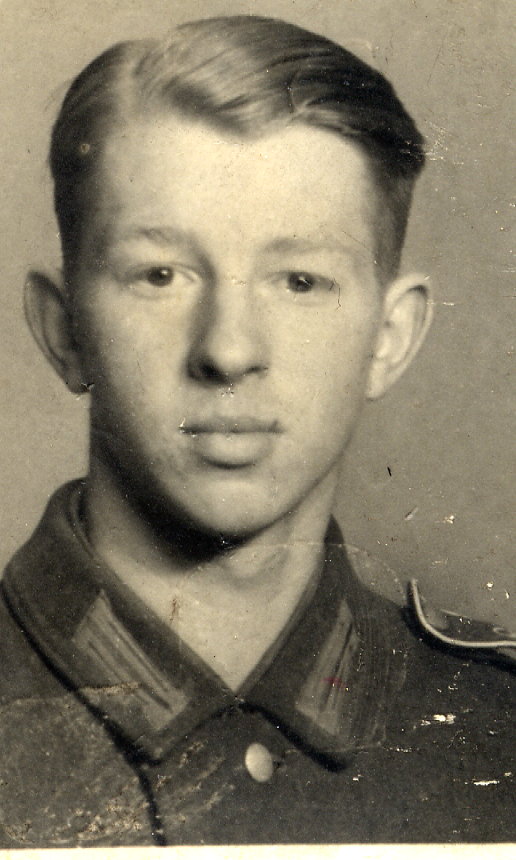
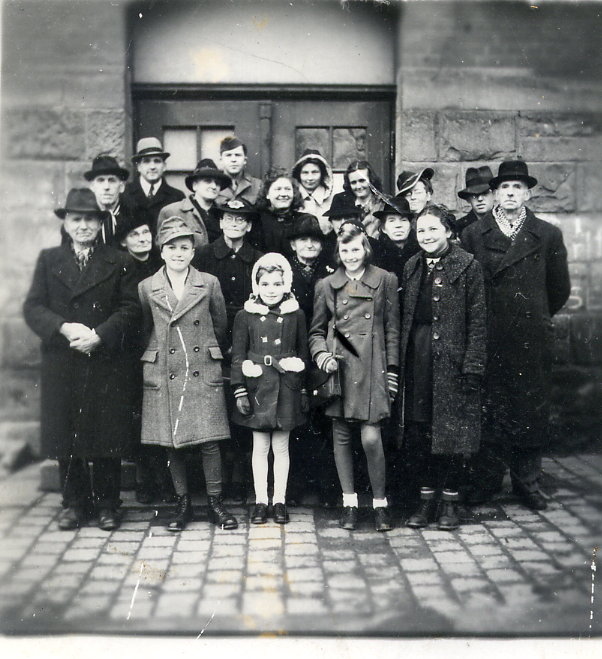 Fig. 7. Survivors of the Kassel Branch in July 1945. (J. Ernst)
Fig. 7. Survivors of the Kassel Branch in July 1945. (J. Ernst)
The city of Kassel lost approximately eleven thousand citizens in the military service away from home and in the forty bombing attacks that occurred in the last two years of the war. The entire downtown was destroyed as well as approximately 80 percent of the rest of the city.
Regarding the LDS branch in Kassel, district president Hermann Walter Pohlsander submitted the following report to the mission office in Frankfurt in August 1945:
The branch in Kassel suffered heavy losses. Seven [eight] members among them four [five] faithful sisters were killed. All [sic] the homes of members have been completely destroyed and the members had to find new homes. In spite of this the Saints are trying to return to this completely destroyed city to keep the branch alive. Brother Gustav Ernst, a priest who is 65 years old, is in charge of the branch consisting of 58 members. Of these about 60% have stayed true to the church. There has been no contact with the Kassel Branch since February 1945, since Kassel is located in the American [Occupation] Zone. The meeting hall, including all the inventory, has been destroyed. The damage has been reported to the city damage office in Kassel [for compensation]. [20]
Franz Niemann was released from a British POW camp and returned to Kassel on August 25, 1945. District president Walter Pohlsander released Gustav Ernst as the branch leader and called Brother Niemann to preside again. [21] Little by little, the dispersed surviving members of the Kassel Branch began to return to rebuild both their city and their church.
In Memoriam
The following members of the Kassel Branch did not survive World War II:
Sophie Elisabeth Dietrich b. Kassel, Hessen-Nassau, 13 Apr 1914; dau. of Karl Friedrich Dietrich and Sophie Marie Elisabeth Schuhmacher; bp. 22 May 1937; conf. 22 May 1937; k. in air raid 22 Oct 1943 (FHL microfilm 68809, no. 120; IGI)
Hermann Karl Georg Ernst b. Kassel, Hessen-Nassau, 26 May 1927; son of Gustav Hermann Ernst and Martha Elisabeth Ruppel; bp. 17 Jun 1935; conf. 17 Jun 1935; ord. deacon 16 Nov 1941; ord. teacher 12 Sep 1943; private; k. in battle Guben, Brandenburg, 23 Feb 1945 (CHL CR 375 8 2439, no. 592; FHL microfilm no. 25762, 1930 and 1935 censuses; www.volksbund.de)
Auguste Hahn b. Kassel, Hessen-Nassau, 12 Sep 1880; dau. of Johannes Hahn and Katharina Zeug; bp. 22 May 1937; conf. 22 May 1937; m. —— Mülverstedt; k. in air raid 22 Oct 1943 (FHL microfilm 68809, no. 117)
Sophie Koch b. Kassel, Hessen-Nassau, 1 Nov 1861; dau. of Justus Koch and Christiana Rudelbach; bp. 2 Nov 1901; conf. 2 Nov. 1901; m. —— Laum (div.); 2m. Heinrich Marks 24 Feb 1916; d. old age 19 Mar 1942 (FHL microfilm 68809, no. 26; FHL microfilm no. 245226, 1930 and 1935 censuses)
Margarethe Gertrude Mosebach b. Stolberg, Hannover, 7 Apr 1925; dau. of Max Mosebach and Marie Friedrichs; bp. 28 Dec 1937; conf. 4 Jan 1938; k. in air raid Kassel, Hessen-Nassau, 22 Oct 1943 (CHL CR 375 8 2439, no. 634; IGI)
Katharine Müller b. Eschwege, Hessen-Nassau, 7 Dec 1871; dau. of Friedrich Müller and Elise Grundherodt; bp. 23 Feb 1930; conf. 23 Feb 1930; m. 28 Jul 1900, Gustav Wittrock; k. in air raid Kassel, Hessen-Nassau, 22 Oct 1943 (FHL microfilm 68809, no. 81)
Frieda Mülverstedt b. Kirchditmold, Hessen-Nassau, 19 Mar 1904; dau. of Max Mülverstedt and Auguste Hahn; bp. 22 May 1937; conf. 22 May 1937; k. in air raid Kassel, Hessen-Nassau, 22 Oct 1943 (FHL microfilm 68809, no. 118; IGI)
Heinrich Ludwig Persch b. Kassel, Hessen-Nassau, 1 May 1879; son of Johann Georg Persch and Theodora Helm; bp. 4 Aug 1932; conf. 4 Aug 1932; d. 12 Oct 1944 (FHL microfilm 68791, no. 388; Frankfurt District book II; IGI)
Sophie Marie Elisabeth Schuhmacher b. Hofgeismar, Hessen-Nassau, 16 Feb 1886; dau. of Johann Christoph Schuhmacher and Marie Sophie Engelbert; bp. 22 May 1937; conf. 22 May 1937; m. —— Dietrich; k. air raid Kassel, Hessen-Nassau, 22 Oct 1943 (FHL microfilm 68809, no. 119; IGI)
Katharina S. Stuppi b. Pfeffelbach, Sankt Wendel, Rheinprovinz, 29 Sep 1867; dau. of Jakob Stuppi and Magdalena Spaniol; bp. 11 Apr 1902; conf. 11 Apr 1902; m. Joseph Webank; d. heart attack 1 Sep 1940 (FHL microfilm 68809, no. 124; IGI)
Notes
[1] Kassel City Archive.
[2] West German Mission branch directory, 1939, CHL LR 10045 11.
[3] Presiding Bishopric, “Financial, Statistical, and Historical Reports of Wards, Stakes, and Missions, 1884–1955,” 257, CR 4 12.
[4] Justus Ernst, oral history, 1985, CHL OH 728.
[5] Justus Ernst, interview by the author, Salt Lake City, January 23, 2009.
[6] Justus Ernst, interview.
[7] Hermann Ernst, autobiography, unpublished.
[8] Kassel Branch general minutes, CHL LR 4336 11.
[9] Ibid.
[10] Ibid.
[11] Ibid.
[12] Justus Ernst, interview.
[13] Kassel Branch general minutes.
[14] Ibid.
[15] Ibid.
[16] Justus Ernst, interview. At the time, 250 Marks was the equivalent of about $60 (not counting the deflation of the Reichsmark in the last year of the war).
[17] Ibid.
[18] Ibid.
[19] Ibid.
[20] Velzen Branch manuscript histort and historical papers, 1921–1973, CHL LR 9489 2.
[21] Kassel Branch general minutes.
